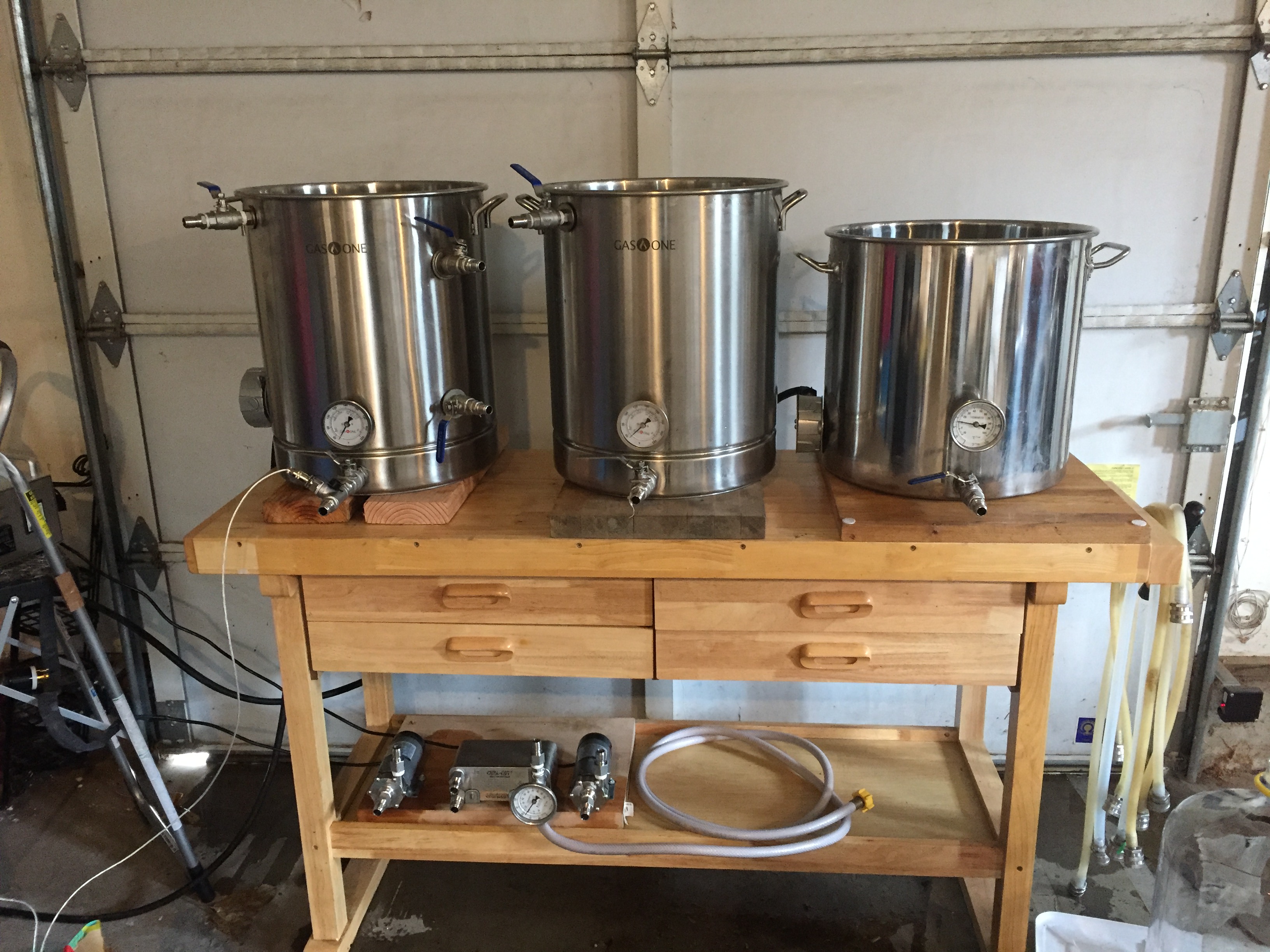luckybeagle
Making sales and brewing ales.
I have a 16g MLT with falsebottom. It sits up kind of high--probably 1.5 gallons' worth of space beneath it. I have a pickup tube on that ballvalve outlet, too, so all but a few ounces makes its way out of the MLT.
I'm a little confused on how to account for this as I'm operating an eHERMS and recirculate my wort throughout the mash (through the HERMS coil in my HLT and back into the mash tun).
I'm brewing a 5.5g batch of a small beer with 9.5# grain bill. At a 1.5 ratio, I'm still only working with a strike volume of 3.6 gallons. The grains wouldn't even be fully submerged if I used that little water.
Should I just increase my strike volume to where the grains are fully sumberged, then just sparge until I hit my preboil volume (and figure out my efficiency based on that for next time)? This logically makes sense as I will probably have much better efficiency with recirculating and fly sparging instead of not recirculating and batch sparging.
This is the FIRST brew on the new system... just trying to figure it out.
Thank you!


I'm a little confused on how to account for this as I'm operating an eHERMS and recirculate my wort throughout the mash (through the HERMS coil in my HLT and back into the mash tun).
I'm brewing a 5.5g batch of a small beer with 9.5# grain bill. At a 1.5 ratio, I'm still only working with a strike volume of 3.6 gallons. The grains wouldn't even be fully submerged if I used that little water.
Should I just increase my strike volume to where the grains are fully sumberged, then just sparge until I hit my preboil volume (and figure out my efficiency based on that for next time)? This logically makes sense as I will probably have much better efficiency with recirculating and fly sparging instead of not recirculating and batch sparging.
This is the FIRST brew on the new system... just trying to figure it out.
Thank you!


Last edited:






![Craft A Brew - Safale BE-256 Yeast - Fermentis - Belgian Ale Dry Yeast - For Belgian & Strong Ales - Ingredients for Home Brewing - Beer Making Supplies - [3 Pack]](https://m.media-amazon.com/images/I/51bcKEwQmWL._SL500_.jpg)


















































